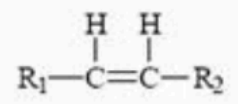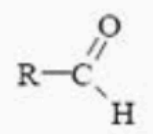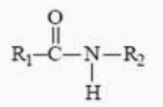Module 2 - Review on Functional Groups
1/45
There's no tags or description
Looks like no tags are added yet.
Name | Mastery | Learn | Test | Matching | Spaced |
|---|
No study sessions yet.
46 Terms
Biomolecules
refer to four distinct groups of molecules found in living organisms
Carbon
Hydrogen
Oxygen
Nitrogen
Biomolecules are composed of:
Macromolecules
They are considered organic, meaning they are composed of Carbon, Hydrogen, Oxygen and/or Nitrogen atoms. They are sometimes also known as _________
Proteins
Carbohydrates
Lipids
Nucleic Acids
The four groups of biomolecules are:
Chemical bonds
formed when 2 or more atoms are held strongly together
Atoms
form chemical bonds to achieve stability
Electrons
The subatomic particles that are involved in chemical bonds are the _______
Valence Electrons
More specifically the electrons present in the outermost shell of an atom known as the ________
Ionic Bond
Covalent Bond
Types of Chemical Bonds:
Ionic Bond
This type of bond generally results from the interaction of metals with nonmetals
Covalent Bond
a chemical bond that involves the sharing of electrons to form electron pairs between atoms
Shared pairs or Bonding pairs
These electron pairs are known as
Hydrocarbons
are organic compounds composed exclusively of hydrogen and carbon atoms
Catenation
the ability of atoms of a single element to form stable chains or rings of covalent bonds with each other
Organic Chemistry
It deals with the study of carbon compounds
Vitalism Theory
This theory was disproven by Friedrich Wohler when he was able to synthesize urea, a compound found in human urine, in the laboratory, using ammonium cyanate, an inorganic compound
Functional Groups
are the substituent atoms or groups of atoms that are attached to specific molecules
Functional Groups
are responsible for the chemical reactions that the molecule they are attached to participate in
Functional Groups
defined as an atom or group of atoms within a molecule that has similar chemical properties whenever it appears in various compounds
Alkanes
Alkenes
Alkynes
Hydrocarbons:
Alkanes

Alkenes

Alkynes

diene

diene
-diene
alcohols

alcohols
-ol
ethers

ethers
-oxy-
aldehydes

aldehydes
-al
ketones

ketones
-one
carboxylic acids

carboxylic acids
-oic acid
esters

esters
-oate
amides

amides
-amide
amines

amines
-amine
nitriles

nitriles
-nitrile
thiols

thiols
-thiol